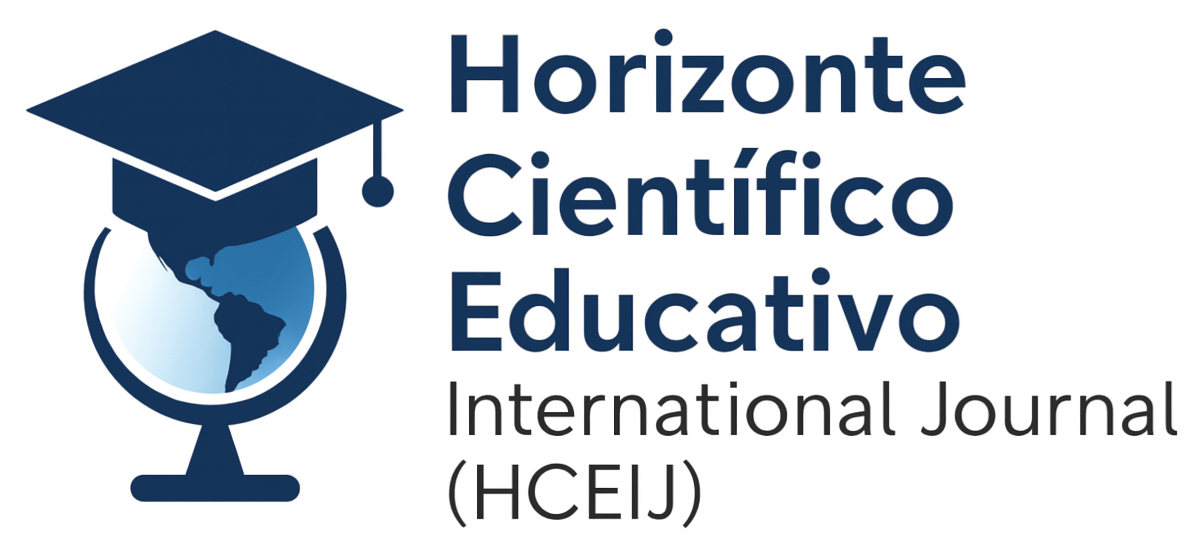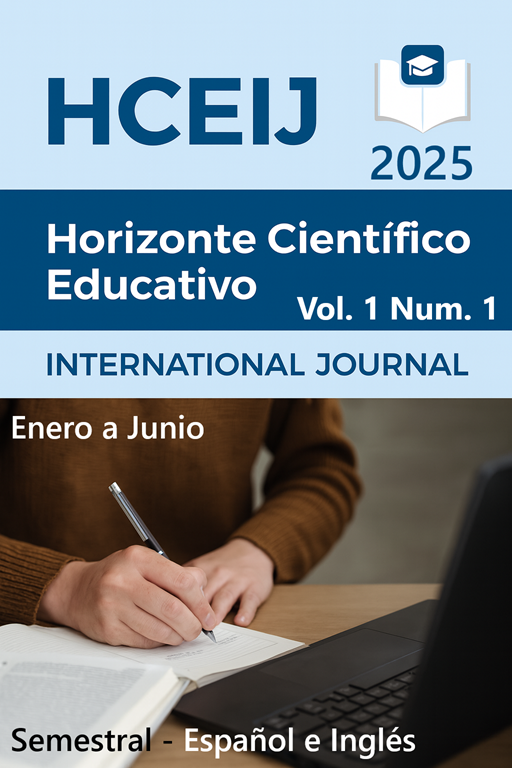Estrategias de lectura multimodal con TikTok y podcasts para mejorar comprensión lectora en 8.º–10.º EGB
DOI:
https://doi.org/10.64747/czxf3r37Palabras clave:
lectura multimodal, podcasts educativos, TikTok, comprensión lectora, diferencias‑en‑diferenciasResumen
Este estudio evaluó el efecto de una secuencia de lectura multimodal —integrando podcasts y videos breves tipo TikTok con señalización, pausas con preguntas y producción guiada— sobre la comprensión lectora de estudiantes de 8.º–10.º de Educación General Básica (EGB) en Ecuador. Se implementó un diseño cuasi‑experimental multibrazo con medición pre–post y construcción del contrafactual mediante emparejamiento por puntaje de propensión (PSM) multinomial y diferencias‑en‑diferencias (DiD). Cuatro condiciones a nivel de aula: C0 (práctica monomodal, control), C1 (podcasts), C2 (videos cortos) y C3 (combinado). La muestra analítica incluyó 112 aulas y 3,276 estudiantes de contextos urbanos y rurales, con conectividad heterogénea. Los instrumentos abarcaron pruebas de comprensión (literal, inferencial, crítica) calibradas con IRT, rúbricas de producción multimodal y cuestionarios de procesos (autoeficacia y estrategias). Los resultados muestran mejoras significativas en comprensión total para C3 frente a C0 (0.24 DE; IC95% [0.17, 0.31]), así como incrementos en la probabilidad de alcanzar nivel de logro alto (+7.8 pp; IC95% [5.2, 10.4]). C1 (0.16 DE) y C2 (0.13 DE) también superaron al control. La comparación C3 vs {C1, C2} evidenció sinergia adicional (+0.07 DE). Las mayores ganancias se observaron en comprensión inferencial y crítica, y la mediación indicó que la autoeficacia lectora (~28% del efecto total) y las estrategias metacognitivas (~9%) contribuyeron al impacto. La intervención fue viable en escuelas con baja conectividad y no amplificó la varianza del rendimiento. Se concluye que secuencias multimodales offline‑friendly pueden mejorar la comprensión lectora en EGB Superior a costos manejables. Se recomienda institucionalizar ciclos de 8 semanas, fortalecer la formación docente en señalización y evaluación formativa, y mantener repositorios abiertos de recursos curados. Futuras investigaciones deben estimar persistencia a 6–12 meses y costo‑efectividad para escalamiento
Referencias
Abadie, A., & Imbens, G. W. (2006). Large sample properties of matching estimators for average treatment effects. Econometrica, 74(1), 235–267. https://doi.org/10.1111/j.1468-0262.2006.00655.x
Aguilar, J. H., Yaguana, M. A., & Simbaña, K. D. (2025). Tecnología y rendimiento académico en estudiantes de ciclo medio en Piñas (Ecuador). Horizonte Científico International Journal, 3(2), 1–12. https://doi.org/10.64747/h1ftaz92
Austin, P. C. (2011). An introduction to propensity score methods for reducing the effects of confounding in observational studies. Multivariate Behavioral Research, 46(3), 399–424. https://doi.org/10.1080/00273171.2011.568786
Benjamini, Y., & Hochberg, Y. (1995). Controlling the false discovery rate: A practical and powerful approach to multiple testing. Journal of the Royal Statistical Society: Series B, 57(1), 289–300. https://doi.org/10.1111/j.2517-6161.1995.tb02031.x
Bertrand, M., Duflo, E., & Mullainathan, S. (2004). How much should we trust differences‑in‑differences estimates? Quarterly Journal of Economics, 119(1), 249–275. https://doi.org/10.1162/003355304772839588
Callaway, B., & Sant’Anna, P. H. C. (2021). Difference‑in‑differences with multiple time periods. Journal of Econometrics, 225(2), 200–230. https://doi.org/10.1016/j.jeconom.2020.12.001
Cameron, A. C., & Miller, D. L. (2015). A practitioner’s guide to cluster‑robust inference. Journal of Human Resources, 50(2), 317–372. https://doi.org/10.3368/jhr.50.2.317
Dunlosky, J., Rawson, K. A., Marsh, E. J., Nathan, M. J., & Willingham, D. T. (2013). Improving students’ learning with effective learning techniques: Promising directions from cognitive and educational psychology. Psychological Science in the Public Interest, 14(1), 4–58. https://doi.org/10.1177/1529100612453266
Dversnes, G., Träff, U., & Skaftun, A. (2023). The potential of podcasts for exploratory talk in high school. Computers in the Schools, 40(3), 225–248. https://doi.org/10.1080/07380569.2023.2196963
Fiorella, L., & Mayer, R. E. (2015). Eight ways to promote generative learning. Educational Psychology Review, 27(4), 617–641. https://doi.org/10.1007/s10648-015-9348-9
García Cabrera, V. A., Guaman Chimbo, M. E., Rea Minchalo, C. B., & Vega Pérez, J. A. (2025). Impacto de los medios tecnológicos en el aprendizaje de estudiantes de educación básica media en contextos urbanos de Ecuador. Horizonte Científico International Journal, 3(2), 1–10. https://doi.org/10.64747/zvkjx362
Gong, Q., Zhang, C., & Xiong, Y. (2024). Short video use and academic performance among elementary students: The mediating role of attention. Frontiers in Psychology, 15, 1404105. https://doi.org/10.3389/fpsyg.2024.1404105
Guijarro‑Garvi, M., Miranda‑Escolar, B., Cedeño‑Menéndez, Y. T., & Moyano‑Pesquera, P. B. (2024). Does geographical location impact educational disparities among Ecuadorians? Humanities and Social Sciences Communications, 11, 1539. https://doi.org/10.1057/s41599-024-04068-0
Guo, X., Sun, L., & Zhang, Y. (2024). Advancing multimodal teaching: A bibliometric and content analysis. Humanities and Social Sciences Communications, 11, 431. https://doi.org/10.1057/s41599-024-04254-0
Johnson, A. P., Binta, H., Phan, M., & Are, C. (2024). The utilization of podcasts and other open‑access resources for surgical education. International Journal of Surgery Open, 63, 101256. https://doi.org/10.1016/j.ijso.2024.101256
Lim, F. V. (2022). Multimodality in the English language classroom. System, 108, 102831. https://doi.org/10.1016/j.system.2022.102831
Moreno, R., & Mayer, R. E. (2007). Interactive multimodal learning environments. Educational Psychology Review, 19(3), 309–326. https://doi.org/10.1007/s10648-007-9026-9
Rosenbaum, P. R., & Rubin, D. B. (1983). The central role of the propensity score in observational studies for causal effects. Biometrika, 70(1), 41–55. https://doi.org/10.1093/biomet/70.1.41
Schwabe, A., & Krüger, J. (2022). No negative effects of reading on screen when reading narrative texts. Media Psychology, 25(5), 763–786. https://doi.org/10.1080/15213269.2022.2070216
Si, Q., Sun, Z., & Zhao, J. (2022). Multimodal literacies in K‑12 classrooms: A review of empirical research. Reading Psychology, 43(2), 113–141. https://doi.org/10.1080/19388071.2021.2008555
Song, K., Chakraborty, A., & Dawson, M. (2018). Does podcast playback speed affect comprehension? A randomized trial. Western Journal of Emergency Medicine, 19(1), 101–105. https://doi.org/10.5811/westjem.2017.10.36027
Sweller, J. (2011). Cognitive load theory. In B. Ross (Ed.), Psychology of Learning and Motivation (Vol. 55, pp. 37–76). Academic Press. https://doi.org/10.1016/B978-0-12-387691-1.00002-8
White, H. (1980). A heteroskedasticity‑consistent covariance matrix estimator and a direct test for heteroskedasticity. Econometrica, 48(4), 817–838. https://doi.org/10.2307/1912934
Xie, J., Liu, H., & He, J. (2023). Short‑form video addiction and academic procrastination: The mediating role of attentional control. Frontiers in Psychiatry, 14, 1260570. https://doi.org/10.3389/fpsyt.2023.1260570
Yélamos‑Guerra, M. S., García‑Gámez, M., & Moreno‑Ortiz, A. J. (2022). The use of TikTok in higher education as a motivating source for students. Porta Linguarum, 38, 83–98. https://doi.org/10.30827/portalin.vi38.21684
Zolkwer, M. B. (2023). Making educational videos more engaging and effective. International Journal of Lifelong Education, 42(5), 571–589. https://doi.org/10.1080/02601370.2023.2196449



